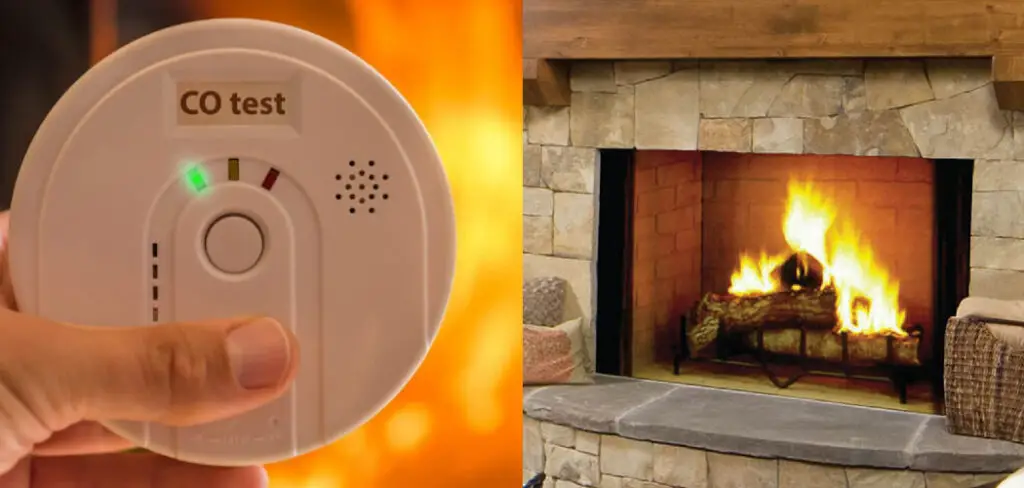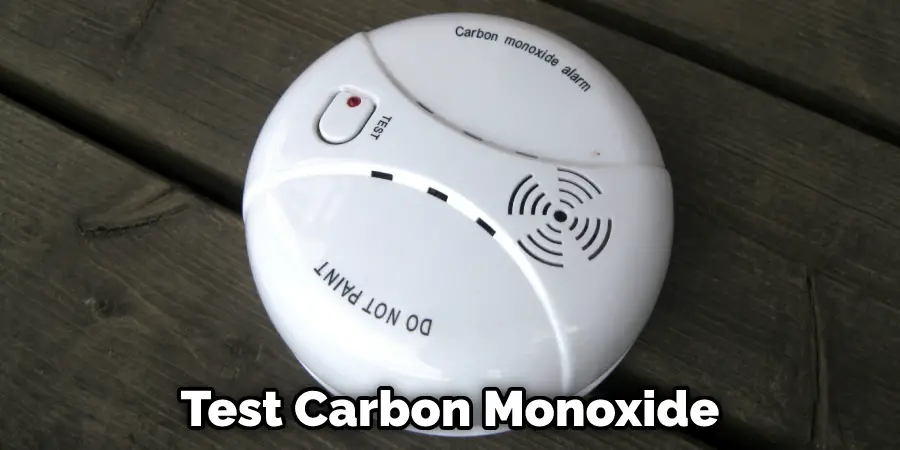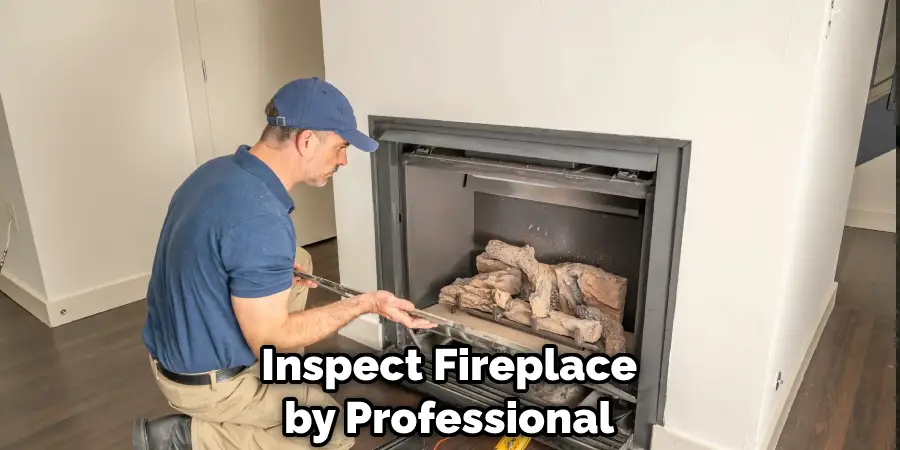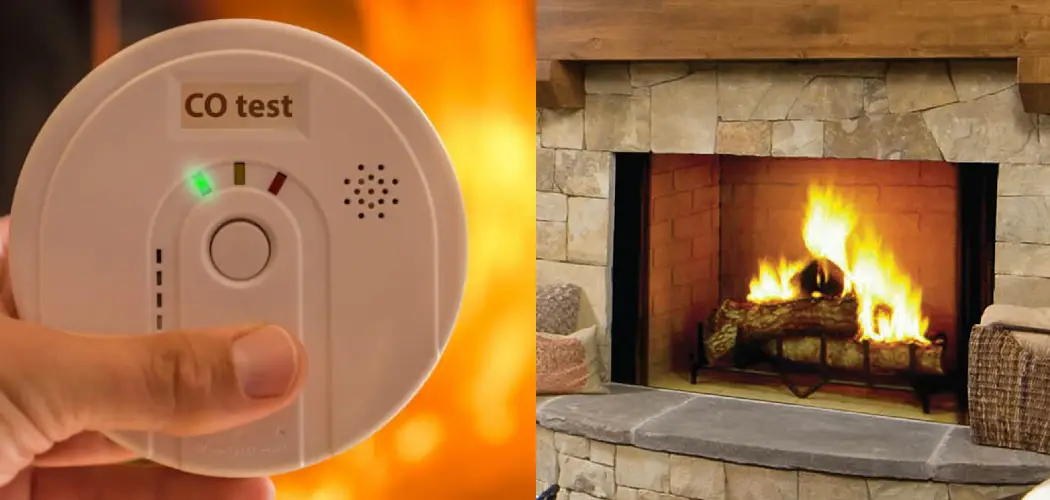It’s that time of year again when people start using their fireplaces to keep warm. Unfortunately, fireplace fires can be cozy and romantic, but they can also be dangerous if not used correctly. One of the dangers of using a fireplace is the risk of carbon monoxide poisoning.

Carbon monoxide is a colorless, odorless gas that can build up in your home if your fireplace isn’t vented properly. In this blog post, we’ll show you how to check your fireplace for carbon monoxide and how to protect yourself from this deadly gas. Stay safe this winter!
What Is Carbon Monoxide Gas?
Carbon monoxide (CO) is a gas that is produced when carbon-containing materials such as wood, gas, or oil are burned. It is odorless, colorless, and tasteless and can be deadly if inhaled in large quantities. In addition, when CO fumes are present, they prevent oxygen from reaching the brain, which can cause brain damage or even death within minutes.
Symptoms of CO poisoning include headaches, dizziness, nausea, and confusion. If you suspect that you or someone else has been exposed to CO gas, it is important to get fresh air immediately and to call for medical help. With prompt treatment, most people recover from CO poisoning without any lasting effects.
However, exposure to high levels of CO can lead to permanent brain damage or death. Therefore, it is important to be aware of the dangers of this gas and to take steps to avoid exposure.
Why It’s Important to Check Your Fireplace for Carbon Monoxide?
Carbon monoxide poisoning kills hundreds of people each year and sends thousands more to the hospital. Yet, many people don’t realize that their fireplace could be a source of this deadly gas. That’s why it’s important to check your fireplace for carbon monoxide regularly. When burning wood, carbon monoxide is produced as a by-product.
If your fireplace isn’t properly ventilated, this gas can build up inside your home and put your family at risk. Symptoms of carbon monoxide poisoning include headaches, dizziness, nausea, and shortness of breath. If you or your family members start experiencing these symptoms, you must get out of the house immediately and call for medical help.
By having your fireplace checked regularly, you can help to keep your family safe from this deadly gas.

8 Ways to Follow on How to Check Your Fireplace for Carbon Monoxide
If you’re using a fireplace to heat your home, it’s important to check it regularly for signs of carbon monoxide (CO) buildup. CO is a colorless, odorless gas that can be deadly if inhaled in high concentrations.
There are a few ways to check your fireplace for CO:
1. Use a Co Detector
These devices are designed to sound an alarm if CO is present in the air. Be sure to place the detector near your fireplace so you can be alerted if there are unsafe levels of CO.
2. Look for Signs of a CO Leak
If you see any signs of a CO leak in your fireplaces, such as soot around your fireplace or yellow flames instead of blue, open a window and call your gas company or a qualified technician to come and inspect your fireplace.
3. Check for Visible Signs of Damage
Look for cracks or soot on the inside of the fireplace. These are signs of combustion gases not being properly vented up the chimney. If you see these signs, have your fireplace inspected and repaired by a professional before using it again.
4. Test for CO With a Candle
If you have a gas fireplace, it’s important to test for carbon monoxide regularly. The best way to do this is with a CO detector, but you can also use a candle.

To test with a candle, hold the candle’s flame near your fireplace’s damper. Carbon monoxide is in the air if the flame flickers or goes out. You should open a window and call a professional to check your fireplace for leaks.
5. Look for Signs of Wear and Tear
Over time, fireplaces can develop cracks and other damage. If you see any signs of wear and tear, it’s important to get your fireplace inspected by a professional. For example, cracks in the firebox or flue can allow carbon monoxide to escape into your home.
If you’re using a gas or oil-burning fireplace, be sure to have it serviced regularly. A build-up of soot or debris can also lead to carbon monoxide problems.
6. Test for CO After Using the Fireplace
Even if everything looks fine inside your fireplace, it’s always a good idea to test for CO after using it. You can do this with a portable CO detector or by opening a window and doors while the fireplace is in use. If no fresh air comes into the room, the CO detector will sound an alarm.
7. Be Aware of Symptoms of CO Poisoning
If you think you may have been exposed to carbon monoxide, it is important to be aware of the symptoms of CO poisoning. These can include headache, dizziness, nausea, shortness of breath, and confusion. If you experience any of these symptoms, it is important to get fresh air immediately and seek medical attention.
8. Get Your Fireplace Inspected Regularly
The best way to prevent carbon monoxide problems is to inspect your fireplace regularly by a qualified professional. They can clean the fireplace and chimney, check for damage, and make sure that everything is in good working order.
That’s it! You’ve now learned how to check your fireplace for carbon monoxide. If you suspect that your fireplace emits high levels of CO, evacuate the premises immediately and call a professional to inspect it. For more information on how to stay safe when using a fireplace, please contact your local fire department.

How to Prevent Carbon Monoxide Poisoning in Your Home
Carbon monoxide is a gas that can be deadly if inhaled in high concentrations. Though it is odorless and Invisible, carbon monoxide detectors can help alert you to its presence. In addition, there are a few simple things you can do to help prevent carbon monoxide poisoning in your home:
- Make sure that all fuel-burning appliances are properly vented. This includes stoves, ovens, furnaces, fireplaces, grills, and generators.
- Do not use a gas oven to heat your home.
- Do not leave a car running in an attached garage, even with the door open.
- Have your chimney checked and cleaned every year to make sure it is clear of debris.
Suppose you suspect that you or someone in your home has been exposed to carbon monoxide; open doors and windows to ventilate the area and call 911 immediately. By taking a few simple precautions, you can help keep your family safe from this invisible killer.
What to Do if You Suspect You Have Been Poisoned by Carbon Monoxide
If you suspect you have been poisoned by carbon monoxide, it is important to seek medical attention immediately and call 911. Symptoms of carbon monoxide poisoning include headache, dizziness, nausea, vomiting, shortness of breath, and fatigue. If you are exposed to high levels of carbon monoxide, it can lead to collapse, unconsciousness, and even death.
If you suspect you have been poisoned by carbon monoxide, you first should get to fresh air immediately. If you are indoors, open windows and doors to ventilate the area. If you are outdoors, move away from the source of carbon monoxide.
Once you are in the fresh air, call 911 and seek medical attention immediately. Giving the medical dispatcher as much information as possible about your symptoms and exposure to carbon monoxide is important. Then, be sure to stay on the line until help arrives. Keep reading for more information about how to check your fireplace for carbon monoxide.
What to Do if You Find High Levels of Carbon Monoxide in Your Fireplace
If you find high levels of carbon monoxide in your fireplace, it is important to take action immediately. Carbon monoxide is a gas that is produced when fuel is burned without enough oxygen. It is odorless, colorless, and can be deadly if inhaled in large quantities. Some symptoms of carbon monoxide poisoning include headache, dizziness, nausea, and shortness of breath.

If you or anyone in your household starts to experience these symptoms, evacuate the premises immediately and call for help. Once the police or fire department arrives, they can determine whether it is safe for you to reenter the building.
In the meantime, do not try to light the fireplace or any other combustion source until you have determined it is safe. High levels of carbon monoxide can be very dangerous, but by taking quick and decisive action, you can protect yourself and your family from harm.
Should I Have My Fireplace Checked for Carbon Monoxide Every Year?
Carbon monoxide (CO) is a colorless, odorless, tasteless gas that is produced when fuel burns. When CO concentrations reach a certain level, they can be poisonous. CO can cause flu-like symptoms such as headache, fatigue, and nausea even at low levels. For these reasons, checking your fireplace for CO every year is important.
Professional inspectors will use special equipment to check the level of CO in your home and make sure that it is safe. In addition, they can give you tips on improving your fireplace’s safety and preventing future problems. Whether you use your fireplace frequently or not, it is always a good idea to have it checked for CO so that you can rest assured that your home is safe.
Conclusion
Carbon monoxide poisoning is serious, and it’s important to be aware of the symptoms. By following our simple checklist for checking your fireplace for carbon monoxide, you can help keep your family safe from this dangerous gas. Thanks for reading our post about how to check your fireplace for carbon monoxide. Have you checked your fireplace for carbon monoxide recently?
You Can Chack It Out How to Cool a Garage With No Windows

